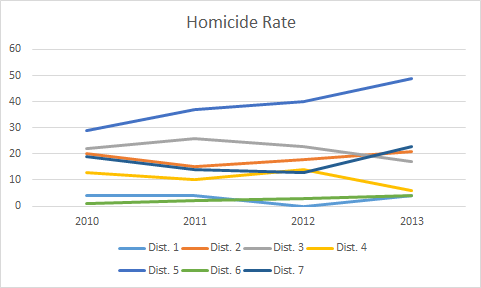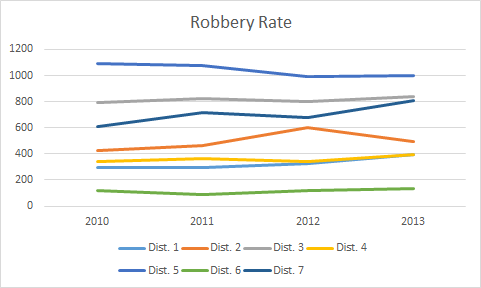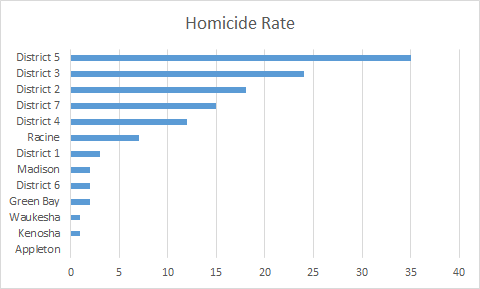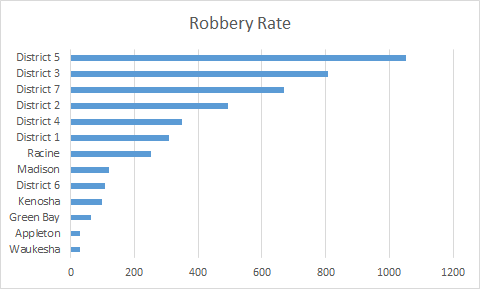My most recent posts in this series have compared violent crime data from different cities. However, focusing on a single crime-rate number from a city may mask wide neighborhood-to-neighborhood variations within the city.
Consider Milwaukee. A helpful on-line data tool permits interesting comparisons among the city’s seven police districts. The data reveal that rates of violent crime vary within the city by about as much as they do across cities. Here, for instance, are the homicides per 100,000 district residents since 2010:
District 5, encompassing the north-central portion of the city, has easily had the highest homicide rate each year, while Districts 1 (downtown and northeast) and 6 (far south) have easily had the lowest. (District boundaries are described in more detail here.)
Robbery rates reflect a similar pattern:
So, what’s up with District 5? High levels of violence in the district seem to be linked to other forms of disadvantage and instability. For instance, District 5 has the lowest rate of owner-occupied housing among all of the districts (41%); by comparison, the much safer District 6 is 77% owner-occupied residential. Similarly, District 5 has the highest rate of tax-delinquent residential properties and the lowest marriage rate for its families with children.
If Milwaukee’s seven police districts were independent municipalities, most would rank among Wisconsin’s largest cities. Only District 1 would fall outside of the top 12. How would the districts stack up against their peer cities in violent crime? Here is a comparison of average homicide rates from 2010 to 2012:
Here are robbery rates:
As the charts indicate, District 6 (Milwaukee’s largest district by population) appears essentially indistinguishable from other, similarly sized Wisconsin cities. District 1 also fares well in homicide, but not so well in robbery. Milwaukee’s other districts, however, have much more significant crime problems. Again, District 5 especially stands out. If District 6 is basically Madison East, District 5 is Detroit West — its homicide rate may be lower than that of the Motor City, but its robbery rate is higher.
[Technical note: Slightly different counting methodologies are used in Milwaukee’s on-line tool and the FBI’s on-line tool, which I used to compute the Wisconsin city numbers. For instance, over the 2010-2012 time period, the FBI tool reports about 3.5% fewer robberies and about 2% more homicides in Milwaukee than does the Milwaukee tool. These small discrepancies would not materially alter the comparisons presented above.]
Cross posted at Life Sentences.





Very interesting. These figures would suggest we put more of our police resources into District 5. I wonder if that is being done?